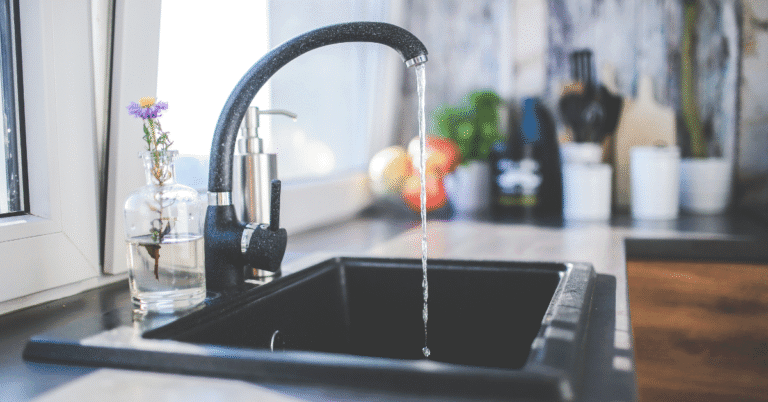
Plumbing emergencies often strike without warning. A sudden leak under the sink, a burst pipe in the wall, or water pooling around a toilet can cause stress and potential damage within minutes. While calling a professional is essential for a permanent solution, knowing how to apply temporary fixes before the plumber arrives can protect your home and minimize repair costs. As a homeowner in Central Oregon, understanding these quick interventions is especially crucial during colder months when pipes are more vulnerable.
In this guide, we’ll walk through five effective temporary fixes you can implement when leaks or breaks occur. Remember, these are stopgap measures—not long-term repairs. For lasting solutions and expert service, refer back to trusted professionals like Einstein Pros.
1. Shut Off the Water Supply Immediately
The first and most crucial step during any leak or pipe break is stopping the flow of water. Locate your home’s main water shut-off valve—typically found near the water meter, basement, or exterior wall box. Turning this valve clockwise until it closes can halt water damage before it spreads to floors, walls, and belongings.
If the leak is isolated to a specific fixture like a toilet or sink, use the local shut-off valve located under the fixture. Slowing or stopping water pressure buys critical time while you prepare a temporary fix.
Why it matters: Even a small leak can release several gallons of water per hour. Immediate shut-off prevents structural damage and mold growth.
2. Use Pipe Repair Tape or Rubber Patches
Once the water is off, containing the leak is the next priority. Pipe repair tape and rubber patches are readily available materials that can provide an effective temporary seal.
- Self-fusing silicone tape: Wrap multiple layers tightly around the leaking area.
- Rubber patch and hose clamp: Place a piece of rubber (from an old hose or gasket) over the hole and secure it with a clamp or zip tie.
These materials create a watertight barrier capable of withstanding moderate pressure until a professional repair can be made.
Pro tip: Keep basic repair materials in a home emergency plumbing kit. Planning ahead makes a significant difference when minutes matter.
3. Apply Epoxy Putty for Small Cracks or Pinholes
Epoxy putty is one of the fastest and most effective solutions for sealing small pipe leaks. It adheres to copper, PVC, and metal surfaces—even when slightly damp.
How to apply:
- Knead the putty until it softens and activates.
- Press it firmly over the crack or hole.
- Smooth the edges and let it cure (usually within 5–10 minutes).
Epoxy putty hardens into a durable seal strong enough to withstand temporary water pressure. While it won’t replace a full pipe repair, it can hold long enough to prevent further flooding.
Safety note: Always wear gloves when handling epoxy to avoid skin irritation.
4. Contain the Leak with Buckets, Towels, and Drip Trays
Water containment is essential to protect flooring and foundation areas. Place buckets or large trays under active drips, and use thick towels to absorb runoff.
For leaks near walls or ceilings, position plastic sheeting or pans to divert water into a controlled area. This not only protects your home but also allows the plumber to easily assess the issue upon arrival.
Prevent secondary damage: Water exposure can quickly warp hardwood floors and create ideal conditions for mold growth. Acting quickly with containment measures limits long-term damage.
5. Relieve Pressure in the Plumbing System
Even after shutting off the main water supply, residual water pressure remains within pipes. Open faucets—starting with the lowest level of the home—to drain out excess water. Flush toilets to empty tanks and bowls.
This step reduces stress on weakened pipes and slows seepage from any compromised joints.
Cold weather tip: During freezing conditions, relieving pressure is especially important. Ice expansion inside pipes can lead to bursts. Draining lines helps prevent additional fractures.
When to Call an Emergency Plumber
Temporary fixes are not permanent solutions. If you’re unsure of the leak’s source, suspect a major break, or notice signs of water near electrical systems, contact a licensed plumbing professional immediately.
For Central Oregon homeowners, prompt service from reliable experts like Einstein Pros ensures long-term safety and repair integrity. Their technicians can assess hidden pipe damage, replace broken sections, and restore full system function.
Preventing Future Plumbing Emergencies
While some leaks are unavoidable, preventive maintenance significantly reduces risk. Consider the following:
- Insulate pipes before winter
- Regularly check under sinks and behind appliances
- Install smart leak detectors for early warning
- Schedule annual plumbing inspections
Staying proactive can help you avoid costly emergency calls in the future.
Final Thoughts
Plumbing emergencies are stressful, but knowing how to respond can save thousands in damage. By shutting off water, sealing leaks with tape or putty, and containing runoff, you can protect your home until professional help arrives. Keep essential supplies on hand and act decisively when leaks occur.
When you need dependable and experienced plumbing service in Central Oregon, trust Einstein Pros to provide expert repairs and lasting solutions.
For more tips and detailed guides on emergency plumbing, stay tuned to our blog and be prepared for whatever your plumbing system throws your way.
Sources:
American Red Cross – Frozen Pipe Prevention
U.S. Department of Energy – Water Heater Basics
